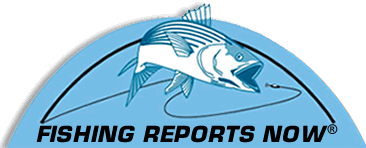page 2 of 2 |
| The Economical Choice Continued from previous page ... |
The size of the hook depends on the bait. Hooks in sizes 6/0 to 8/0 are standard for baits like butterfish and sardines, currently the two most popular baits on the boats. But, for example, jumbo spearing will require a smaller hook, if you bring spearing. Dave prefers chemically sharpened hooks, particularly those made by either Gamakatsu or Hayabusa. The boat will supply basic hooks, swivels and weights. Experienced anglers might want to bring their own variety. The boat will also supply dead bait like butterfish or sardines. Often this bait works just fine, but live bait is often a better bet. Live bait is caught on the trip with your 10-pound-class rod. That’s standard practice for all anglers onboard. Part of the wonder of tuna fishing is the unbelievable life that swims around the boat, especially at night, attracted by the chum slick or lights. Sometimes schools of squid swarm past the vessel all night long, lit up in fluorescent colors. Other times the squid are scarcer. Flying fish swim by, translucent wings making them look like strange bugs. Schools of cero mackerel might appear. Even big sharks are attracted by the chunks of bait and the slick. Maybe whales charge the boat, mouths wide open, scooping up plankton. We’re talking Twilight Zone, folks. It can feel unreal. But it’s absolutely essential to catch the squid and bait like tinker mackerel at every opportunity. That’s one of Dave’s suggestions for what to do differently than others, because live and fresh baits often out-fish frozen, dead butterfish or sardines that the boat provides. But not always. If there’s a lull in the fishing, don’t waste time. Always catch bait, and stockpile it for when the fishing turns on, placing it in a livewell or a cooler. Catching the bait isn’t so difficult. The boat or any offshore tackle shop can help you figure out the rigs to buy to catch squid and mackerel. Squid jigs and Sabiki rigs are two standard choices for catching bait. Dave likes Williamson chokka squid jigs, although they’re no longer made. Green and orange are Dave’s go-to colors for any of the jigs. Countless other tips can matter for success, and they’re just part of the experience learned on the boat. But some examples: -- When someone hooks a fish, pay attention to the depth that was fished. Ask the angler or others who know, and fish that depth. Maybe use the same amount of weight. Experiment with depths constantly until you hook up, and then stick with that depth as long as it works. The captain will announce the depths where he reads fish on the fish finder. Be sure to try that depth. Use a depth counter that can be attached to the line, or simply pull off the line from the reel in estimated 1-foot increments and count. It works. But do stay aware of your depth, because you want to keep changing it until you connect, and then you want to repeat that depth. -- Don’t be passive, keep trying different things until something works. Different baits, different depths, different weights, different leaders and so on. -- When flat-lining, the line is pulled off the reel at a rate just faster than the line is moving away in the current. This allows the most natural presentation, like a bait that is flowing naturally along with the current. -- Dave always brings whatever live and fresh bait he can gather, spending time on the previous days to catch it. He’s so driven that he’ll be catching baits at the docks with a castnet or a baited hook minutes before the boat departs. He brings a livewell for live baits, including live baits that he catches on the trip. He fills a Ziploc with whatever fresh baits he could find, like peanut bunker or snapper blues. Finally, don’t delay to reserve these trips. They will fill up. If you can afford to book more than one, it’s a good idea, because offshore weather is often rough at this time of year, and the chances of the boat canceling a trip because of dubious weather are high. The trips are often cancelled during the day of departure, and by then no space might be available to book another. These trips are always an experience, always special, so long as the boat is good. |


